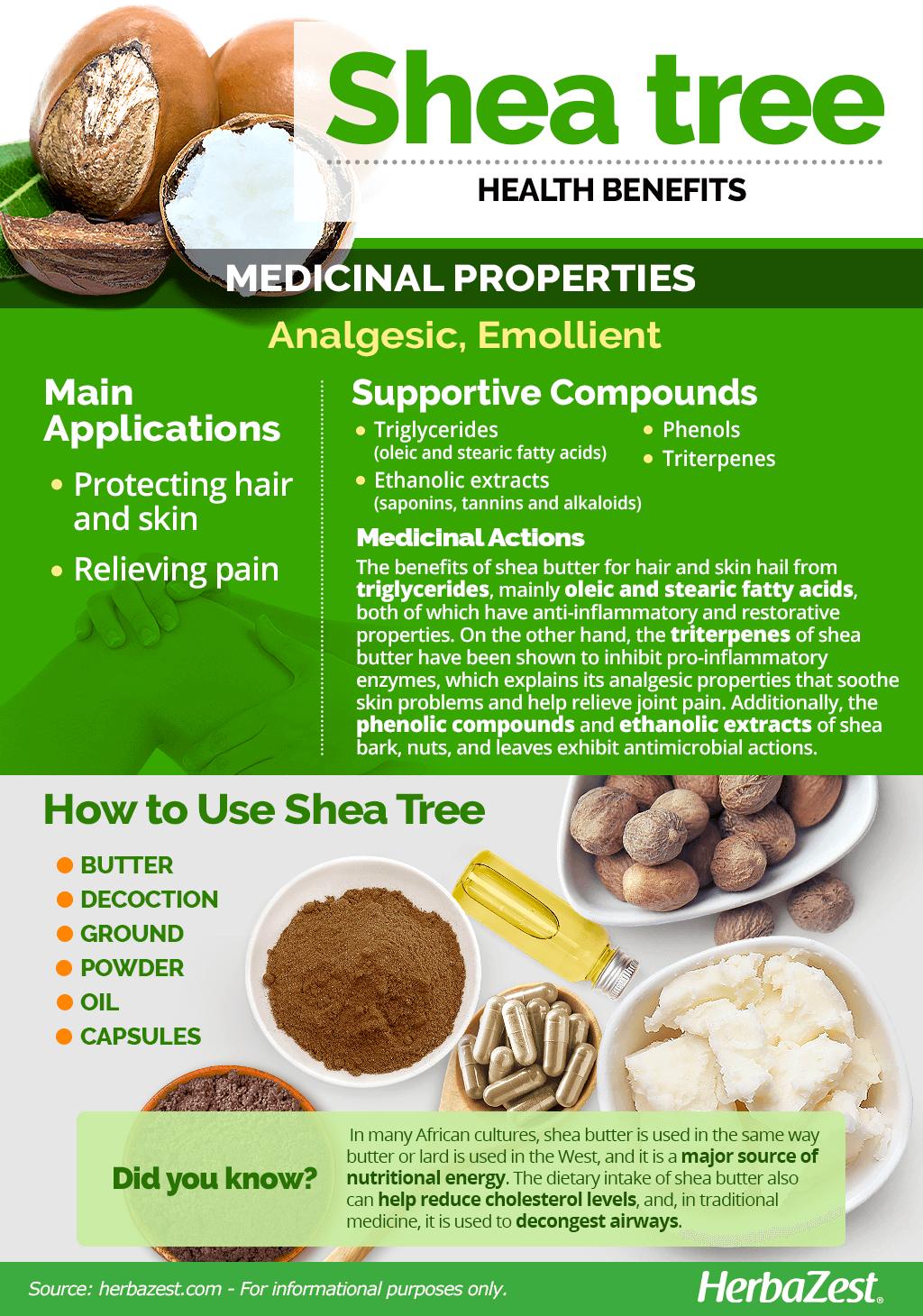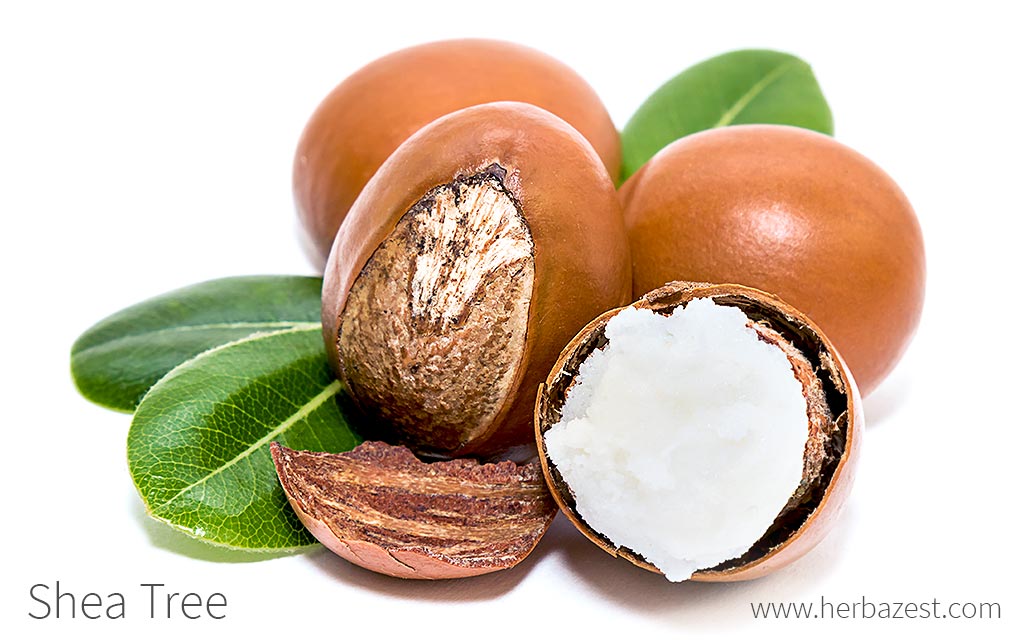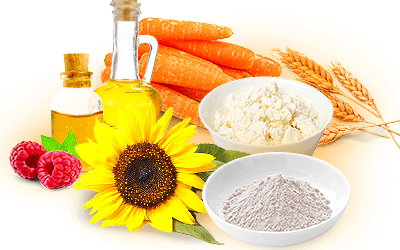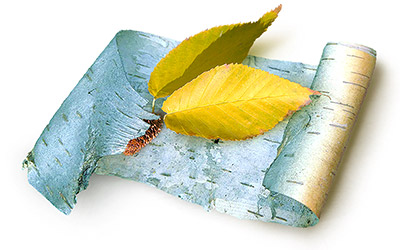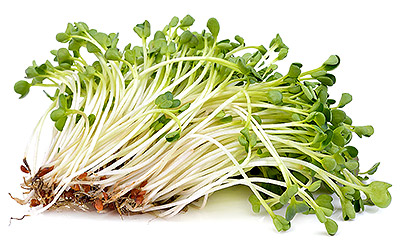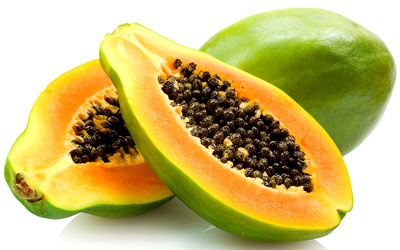Native to West Africa, shea tree provides the chief edible vegetable fat for a large part of rural populations, especially to those who live in remote locations where little else grows. Shea tree has been instrumental in the historical development of many African cultures. Even today, it is the main source of income for millions of people. Shea butter is the fat extracted from the nut of shea tree, and it has been known in Africa for centuries. In recent years, it's become popular worldwide owing to its immense nutritional and curative benefits.
Shea Tree Medicinal Properties
Health Benefits of Shea Butter Tree
The benefits of shea butter, the main product of the shea tree, have been widely studied by Western medicine.
The healing properties of shea butter have been used in West African medicine for centuries, serving multiple purposes, including:
Protecting hair and skin. Shea butter has been shown to possess antibacterial, anti-inflammatory, and emollient properties, which have been traditionally used to treat skin issues, such as small wounds, dermatitis, and dryness. It also helps protect against the harmful effects of sun exposure and revitalizes damaged hair.
Relieving pain. Some compounds in shea butter have analgesic actions and can help reduce the pain caused by osteoarthritis and other inflammatory conditions.
The analgesic properties of shea butter have been successfully used in desensitizing lubricants for rectal examinations, showing effects similar to lidocaine.1
In many African cultures, shea butter is used in the same way butter or lard is used in the West, and it is a major source of nutritional energy. The dietary intake of shea butter can also help reduce cholesterol levels, and in traditional medicine, it is used to decongest airways.
How It Works
The main components in shea butter are triglycerides, a type of fat. The two predominant fatty acids that can be attributed to its health benefits are oleic and stearic fats, which make the butter an excellent source of dietary energy; these fatty acids are also responsible for shea butter's anti-inflammatory and restorative properties for the skin.2
Shea butter has been shown to inhibit pro-inflammatory enzymes, inducible nitric oxide synthase (iNOS), and cyclooxygenase-2 (COX-2), with analgesic and anti-inflammatory effects.3 Preliminary studies suggest that the triterpenes in the shea nut oil may be effective for treating knee osteoarthritis.4
Additionally, the ethanolic extracts of the bark, seeds, and leaves of shea tree (saponins, tannins, and alkaloids) have demonstrated antimicrobial activities, making this plant a potent medicine against bacterial infections, particularly diarrheal diseases.5
Although shea butter has a fatty acid composition similar to cocoa butter, it does have a much higher level of unsaponifiable matter (compounds that don't form soaps when blended with alkaline solutions), which is composed of various phenols and gives shea butter its antioxidant effect. Shea butter is also rich in terpenic alcohols, which are responsible for its diuretic properties.
Other great herbs for skin health are jojoba, aloe, oat, and coconut; whereas turmeric, gotu kola, devil's claw, and cloves can provide pain relief.
Shea Tree Side Effects
There are no reported side effects from topical application of shea butter. It is considered very safe. Recent research indicates that shea nut butter does not contain any detectable protein residues from peanut or allergenic tree nuts (Brazil nut, walnut, almond, pecan, or hazelnut).
- Medicinal action Analgesic, Emollient
- Key constituents Triglycerides (oleic and stearic fats), ethanolic extracts (saponins, tannins and alkaloids), phenols, terpenic alcohols
- Ways to use Decoctions, Freshly ground, Powder, Essential oil
- Safety ranking Safe
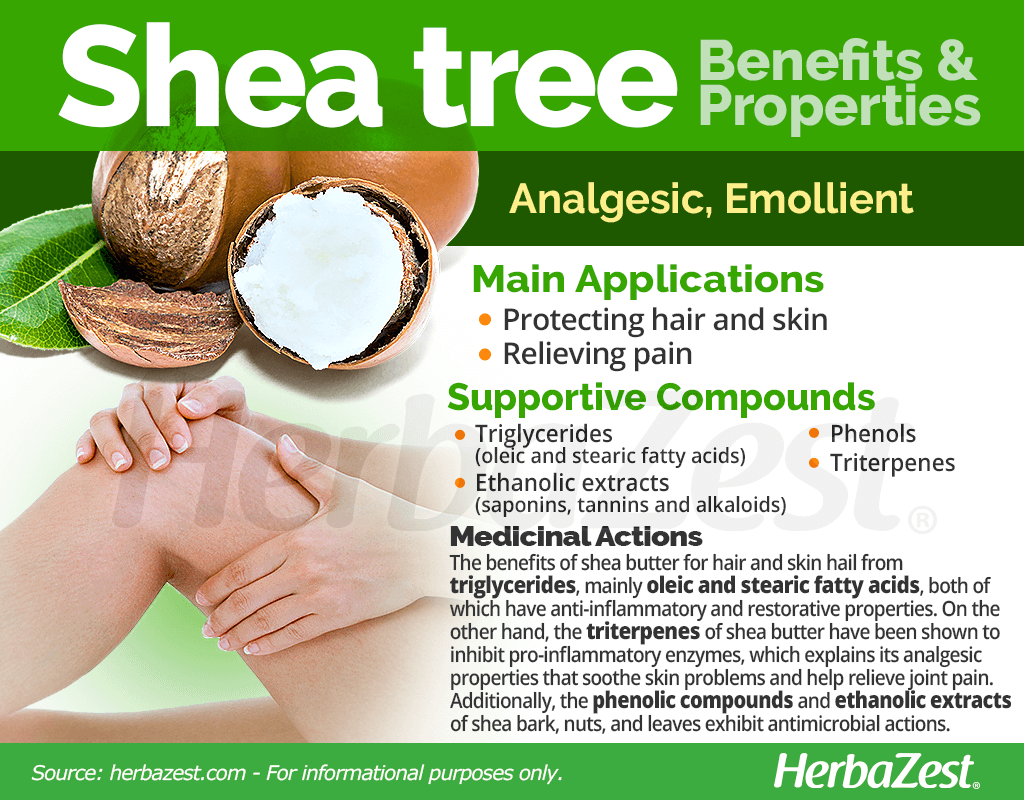
How to Consume Shea Tree
Natural Forms
- Butter. It is extracted from fresh shea nuts, and it is white, odorless, and has little flavor. The butter is rich in fatty acids and contains vitamins A, E, D and F as well as minerals, such as iron and copper. Due to its demulcent, softening properties, raw shea butter is added to body creams, lotions, lipsticks, and other cosmetic products.
Decoction. In West Africa, shea leaves are boiled, and the concentrated liquid is consumed for relieving stomach discomfort, headaches, diarrhea, and dysentery. The bark decoction is used to facilitate childbirth and encourage lactation after delivery.
Ground. In this way, the fresh roots can be taken orally to cure jaundice. They can also be boiled and crushed to treat chronic sores.
Powder. Obtained from dried and pulverized shea kernels, shea powder is an excellent exfoliating agent for the skin. It promotes the growth of new skin cells and delays the appearance of visible signs of aging.
In its native land, raw, unrefined shea butter is used for cooking, similar to how lard is used in the West.
Herbal Remedies & Supplements
Oil. Shea oil has the same origin as shea butter; however, it is refined and commercialized in liquid form. Shea oil has a light yellow color, and it mainly contains unsaponifiable matter, so it doesn't solidify like shea butter. It can be applied as a treatment for damaged hair and dry skin.
Capsules. Shea soft gel capsules are often mixed with collagen and other nutrients, so they can be applied on hair and skin in order to obtain shea's regenerating and demulcent benefits.
- Edible parts Fruit
- Edible uses Oil
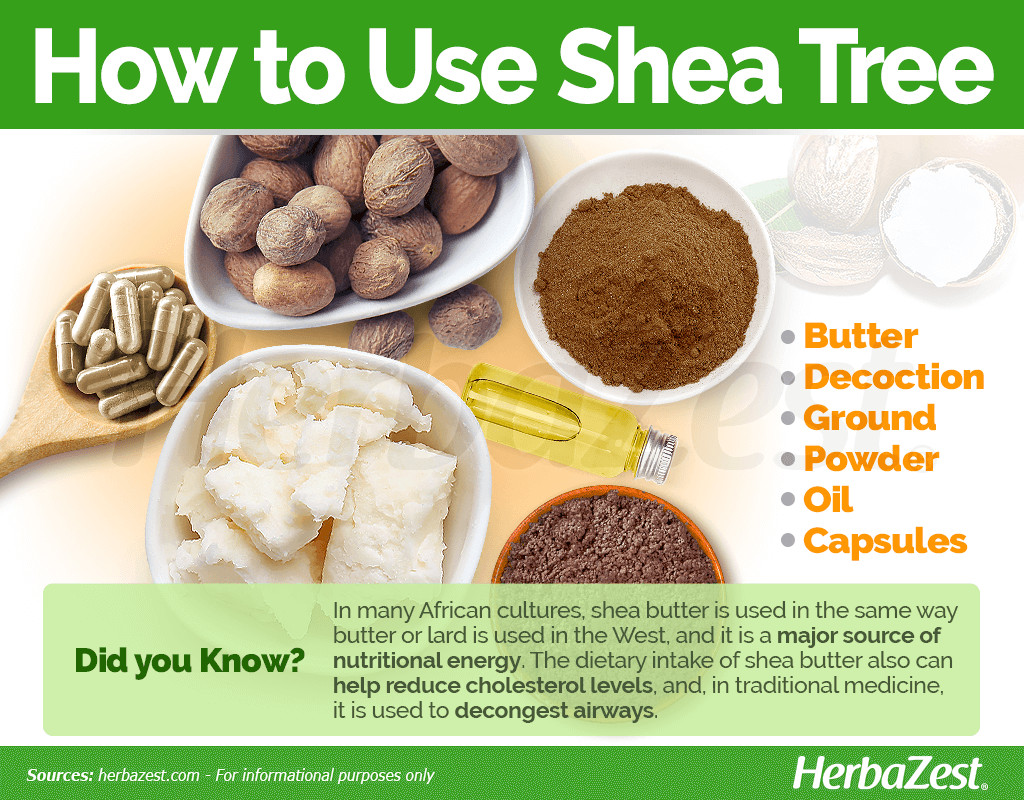
Growing
Growing a shea tree in a home garden is not possible, as it does not adapt well to climates different from its native West Africa.
Growing Guidelines
The shea tree is a light-demanding species of open sites and parkland savannah; forming extensive pure stands in some areas but often also associated with other trees.
This extremely resistant species can survive at an altitude of up to 3,937 feet (1,200 m), and endure temperatures between 75 - 90°F (24 - 32°C) with very little water requirements.
It prefers dry and sandy clay soils, with a good humus cover, but also tolerates stony sites and lateritic subsoil although reacting with lower yields.
The shea tree seeds germinate easily when fresh and grow a long taproot. For this reason, they do not respond well to transplantation.
The hermaphroditic flowers of the shea tree are usually cross-pollinated, but they can also be self-pollinated. Insects, especially bees, are important for pollination.
Flowering lasts 30 - 75 days, and the fruit takes four to six months to develop, reaching maturity early in the rainy season.
A tree raised from seed matures slowly and can take up to 50 years before full productivity is reached.
- Life cycle Perennial
- Harvested parts Roots, Leaves, Fruit, Bark
- Light requirements Full sun
- Soil Light (sandy), Clay loam
Additional Information
Biology of Shea Tree
The shea butter tree is deciduous species indigenous to semi-arid and sub-humid savannas of sub-Saharan Africa. It is a medium size tree that can reach heights of 23-82 feet (7-25 m). The shea tree is densely branched, and its round-shaped crown can spread from 10-13 feet (3-4 m) to 26 feet (8 m). The bark is thick and corky, with deep cracks. Its leaves are oval-shaped, forming dense clusters, while the buds grow at the end of the twigs and take 2 years to turn into flowers, which are white or creamy-white, about 0.6 inches (1.5 cm) in diameter. The shea fruit is egg-shaped, about 2-3 inches (5-8 cm) long, and 1.2, 1.6 inches (3-4 cm) wide, with a yellow-green hue and a thick, buttery pericarp. The fruit generally contains one round red-brown seed (the shea nut), surrounded by thin shell.
Classification
The shea tree (Vitellaria paradoxa, or V. nilotica) belongs to the Vitellaria genus, which is part of the Sapotaceae family, which encompasses about 1,250 species of evergreen trees and shrubs across 53 genera widely distributed across tropical regions of the world. Notable members of the Sapotaceae family are lucuma (Pouteria lucuma) and mamey (Pouteria sapota)
Varieties and Species of Shea tree
The genus Vitellaria is considered as monospecific, with no varieties reported. However, depending on their natural environment, two subspecies are recognized: Vitellaria paradoxa, restricted to Western Africa, and Vitellaria nilotica, which grows in Eastern Africa.
Historical information
The oldest historical references of shea tree date back to the 14th century CE, and were recorded by travelers going through Africa. According to these first records, large amounts of shea butter were transported to Egypt during Queen Cleopatra's reign. However, shea butter, the main product of the shea tree, only became popular in Europe by the end of the 18th century. A young Scottish surgeon named Mungo Park, described the process of making shea butter, called shea-toulou (tree butter in local language), as well as its importance to African cultures in his book, Travels into the Interior of Africa.
In many African countries, people nowadays grow shea tree and extract its precious oil as a main source of income. Women usually extract and prepare the raw shea butter, whereas men commercialize the product.
In African communities, shea butter is called karité, meaning life.
Economic Data
Burkina Faso and Ghana are currently the world's largest producers of shea nuts, followed by other African countries, including Benin, Cote d'Ivoire, Nigeria, and Mali.6 The production mostly goes to Europe and Japan. Unprocessed shea nuts have been exported to Europe for decades, primarily to Switzerland and the UK for making chocolate.
Since several foreign cosmetic firms have already begun to use shea butter in their lotions, creams, soaps and other products, the revenues for shea nuts trade are increasing, and commercial agreements are being signed to benefit direct producers instead of retailers, mostly because shea trees are the primary economic resource for many poor communities.
In Burkina Faso, where shea nuts are known as “women's gold,” a survey showed that they can provide as much as 20% of a family's income. Similarly, field studies in Mali suggest that a massive 90% of households are engaged in the processing of the nuts in some way or another, and shea tree products make up over half of women's income in general.
Other Uses
Food industry. Shea nut is processed into a wide range of food products, including chocolate (as a substitute for cocoa butter).
Cosmetics. Shea nut oil is also commonly used in the cosmetic industry as a popular ingredient in lipsticks, soaps, shampoo, creams, and lotions.
Waterproof material. Shea butter is also used as a waterproof substance for the walls of houses since occasional downpours can wash the mud away.
Fodder. The fresh fruit of shea tree is eaten, and the leaves are used to feed livestock and other farm animals.
Sources
- African Journal of Pharmacy and Pharmacology, Antimicrobial screening of stem bark extracts of Vitellaria paradoxa against some enteric pathogenic microorganisms, 2008
- Agricultura Tropica et Subtropica, Shea Industry - A Means Of Poverty Reduction In Northern Ghana, 2011
- Journal of Nutrition and Food Sciences, Effects of Oral and Topical Use of the Oil from the Nut of Vitellaria paradoxa, 2014
- Lost Crops of Africa, pp. 303-22
- Notulae Scientia Biologicae, Comparative Antibacterial Efficacy of Vitellaria paradoxa (Shea Butter Tree) Extracts Against Some Clinical Bacterial Isolates, 2015
- United Nations, Africa Renewal, Making trade work for poor women, 2001
- University of Nebraska, Institute of Agriculture and Natural Resources, Food Allergy Research and Resource Program, SHEA NUT BUTTER DOES NOT POSE A RISK TO TREE NUT- OR PEANUT-ALLERGIC CONSUMER
- World Agroforestry Centre, Vitellaria paradoxa
- FAOSTAT, Non-Wood Forest Products 9, Shea nut (Vitellaria paradoxa) production and collection in agroforestry parklands of Burkina Faso, 1996
- Medicinal Plants of the World, p. 431
- Germplasm Resources Information, Taxon: Vitellaria paradoxa C. F. Gaertn
- Journal of Ethnopharmacology, Evaluation of 13 selected medicinal plants from Burkina Faso for their antiplasmodial properties, 2010
- African Journal of Traditional, Complementary, and Alternative Medicines, Herbal Remedies and Their Adverse Effects in Tem Tribe Traditional Medicine in Togo, 2010
- Mayo Clinic, Triglycerides: Why do they matter?
Footnotes
- Scientific Reports. (2023). Comparing the effectiveness and lubricity of a novel Shea lubricant to 2% lidocaine gel for digital rectal examination: a randomized non-inferiority trial. Retrieved March 30, 2023, from: https://pubmed.ncbi.nlm.nih.gov/36949085/
- International Journal of Molecular Sciences. (2018). Anti-Inflammatory and Skin Barrier Repair Effects of Topical Application of Some Plant Oils. Retrieved April 5, 2023 from: https://www.ncbi.nlm.nih.gov/pmc/articles/PMC5796020/
- Journal of Complementary & Integrative Medicine. (2012). Anti-inflammatory effects of shea butter through inhibition of iNOS, COX-2, and cytokines via the Nf-κB pathway in LPS-activated J774 macrophage cells. Retrieved April 5, 2023 from: https://pubmed.ncbi.nlm.nih.gov/22499721/
- PLoS One. (2016). Shea Nut Oil Triterpene Concentrate Attenuates Knee Osteoarthritis Development in Rats: Evidence from Knee Joint Histology. Retrieved April 5, 2023 from: https://www.ncbi.nlm.nih.gov/pmc/articles/PMC5008785/
- Polymers (Basel). (2022). Shea Butter Potentiates the Anti-Bacterial Activity of Fusidic Acid Incorporated into Solid Lipid Nanoparticle. Retrieved April 5, 2023 from: https://pubmed.ncbi.nlm.nih.gov/35746012/
- German Cooperation. (2022). Boosting Organic Trade in Africa. Retrieved May 15, 2023, from: https://www.giz.org/de/downloads/Market-Brief_Shea_WEB.pdf
